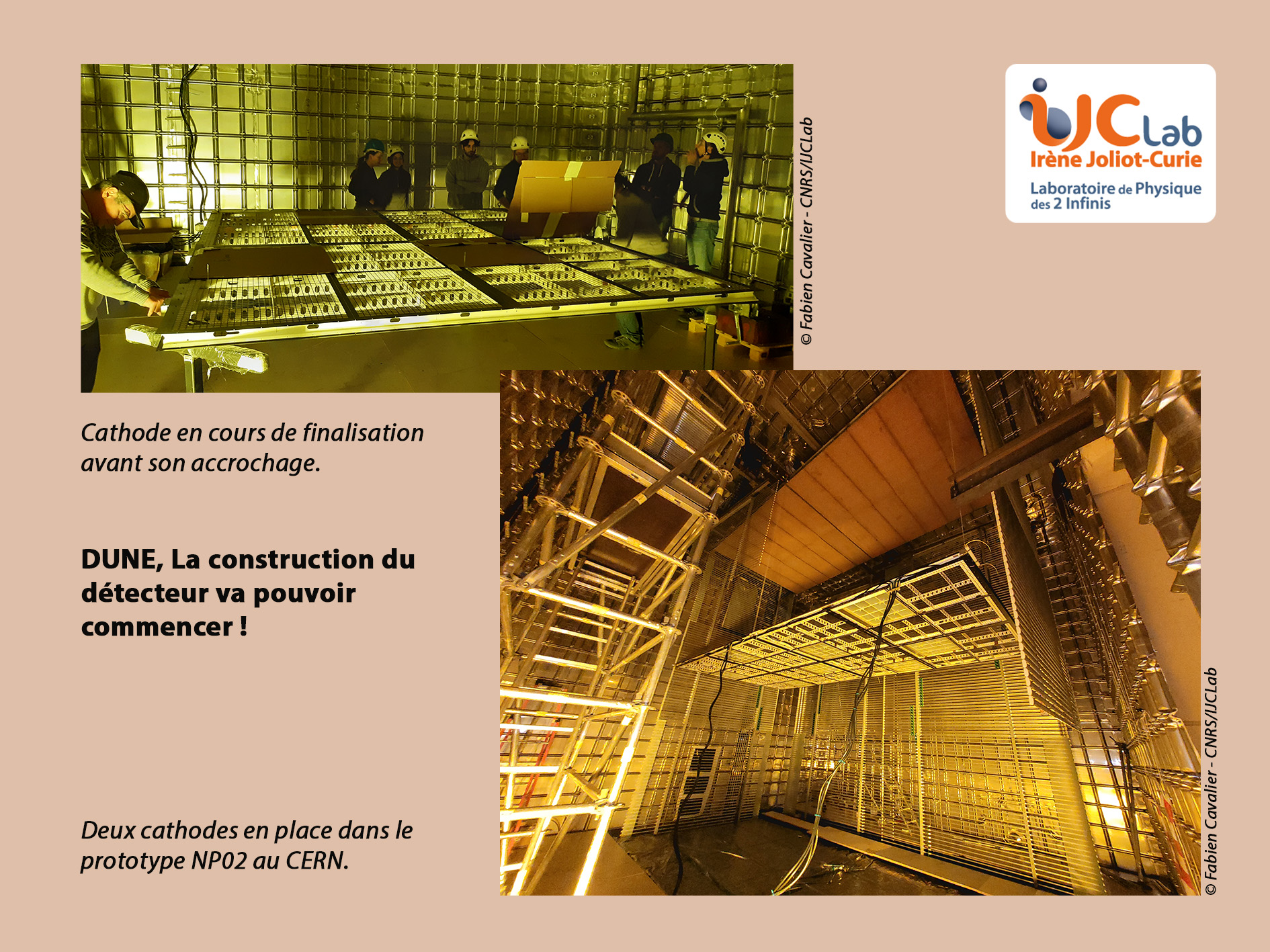
Following the signing of the agreement with Fermilab, the DUNE experiment will enter the detector construction phase after many years of R&D. IJCLab has been involved in the project since 2019 and contributes technically to the so-called “Vertical Drift” detector. This detector is a gigantic (62x15x14 m3) TPC (Temporal Projection Chamber) containing 17 kT of Liquid Argon at -185 oC.
Our contribution, estimated at €3.5 million, is made up of 2 elements: the cathodes and the chimneys for the reading electronics placed at the top of the detector. The cathodes form a mechanical assembly of 800 m2 with a flatness better than 2 cm and will be brought to -300 kV to allow the establishment of the uniform percent drift field, necessary for the proper functioning of the detector. They were entirely designed in the laboratory within the Mechanical Department (Design Office Service) with the help of the Mechanical Design and Assembly Service for the various tools essential for the qualification tests.
The chimneys are stainless steel enclosures designed by the laboratory's design office and house the IP2IL's 4,000 Front-End (FE) electronic cards which read the physical signals. With a length of 1.6 m, they pass through the cryostat to bring the FE cards as close as possible to the detection anodes, while remaining outside the cryostat. Thanks to fiberglass guides, the FE cards are plugged into PCBs designed and partially produced within the Electronics Department (CAD Service – Prototyping – Production) and which act as waterproof bushings. The Mechanical Creations and Assembly Department is also involved in the tooling.
Several prototypes of the cathodes and chimneys were tested in the laboratory (with the support of the Cryogenics Department and the Vacuum & Surface platform of the Accelerators Pole) or at CERN in conditions close to the final conditions. This year 2024 will see the finalization of the prototypes and the launch of industrial production.





